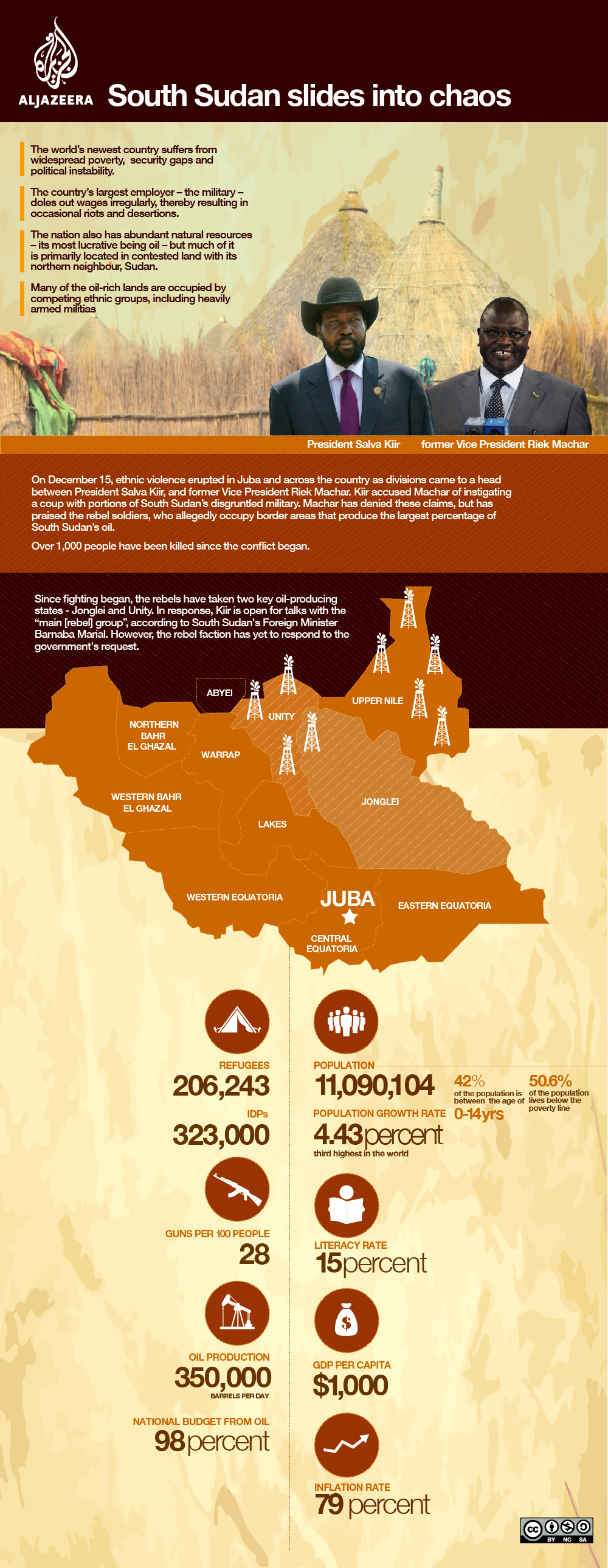‘We must stand by the people of South Sudan’
It is time to stay, deliver and stand by the world’s youngest nation.

When South Sudan hosted its first investment conference on December 4 and 5, humanitarians were excited at the prospect that the country was on the right track for lifting its 12 million people out of poverty and want. We were also excited that the investment conference’s agenda chimed with our recently launched Strategic Response Plan for 2014-2016, which unveiled an innovative new direction for humanitarian action while seeking $1.1bn to meet the needs of the most vulnerable 3.1 million people across the country in 2014.
Our new humanitarian approach was informed by evidence on the ground which showed an improvement in the humanitarian situation on several fronts in 2013, with overall needs reducing for the first time since 2011. The arrival of refugees and returnees from Sudan had slowed. The impact of inter-communal violence, while still a cause for concern, also decreased. Food security improved for many South Sudanese, although the number of people deemed severely food insecure remained worryingly high. With this in mind, we were of the view that South Sudan had turned a corner. Aid organisations developed a three-year strategy combining life-saving relief and preparedness for future shocks with strengthening of national capacity, thereby laying the groundwork for sustainable development. Our goal was to link our work with South Sudan’s development aspirations and enable people to reap the fruits of their hard-earned political independence.
 |
| South Sudan violence infographic [Al Jazeera] |
Therefore, at the beginning of December, we were approaching 2014 filled with hope. Little did we, or any others, know that things would fall apart in less than a week and that we would be faced with one of the largest emerging humanitarian crises in the world. Despite the rapid deterioration in the situation, aid agencies were able to cope with the immediate consequences of the crisis. As part of their dry season contingency planning, humanitarians had pre-positioned supplies in strategic hubs across the country in anticipation of the violence that has been recurrent over the years, especially in Jonglei State.
These stocks have enabled us to launch a rapid life-saving response operation reaching tens of thousands of civilians in UN mission bases and elsewhere across the country. But the emergency stocks are insufficient to meet the massive increase in needs arising from this new crisis. We are already aware of over 180,000 people who have been displaced so far. The real scale of displacement is likely much greater, with thousands of vulnerable people thought to have fled into the bush, where aid agencies cannot currently reach them. The number will continue to grow if the political crisis does not stop.
It has been a devastating 13 days for South Sudan. This is the time for political leaders to demonstrate leadership by prioritising peace and security, ensuring the protection of civilians according to international law. South Sudan stands on the precipice of losing the economic prospects sown in the past two years. If violence does not stop now, its people will be plunged into an uncertain and difficult future.
For humanitarian organisations – United Nations and NGOs alike – this is the time to stay, protect and deliver. We must stand by the people of South Sudan at this extremely difficult time and provide impartial and neutral life-saving aid. Humanitarians estimate that $166m is required immediately to assist hundreds of thousands of people in urgent need of life-saving aid. We are calling on the donor community to ensure that non-governmental organisations and UN agencies have the resources – including humanitarian managers, specialists, and supplies such as medicines, water and sanitation equipment, blankets, and shelter and food – to ensure that we can meet the most basic and urgent lifesaving needs of what is quickly evolving to affect not tens of thousands, but I suspect, hundreds of thousands of people.
The humanitarian community remains optimistic that the vision in our Strategic Response Plan, linking short term aid to long term development, and the interest expressed by international investors to transform South Sudan’s potential into a vibrant economy, is not entirely lost. But to get back on the right track, South Sudan’s political leaders must urgently find each other in peaceful dialogue and seek a solution to the political crisis. The alternative is to allow the situation to continue to spin in the wrong direction, with endless strife and massive loss of lives. That cannot be on the minds of any responsible leader, and I hate to think that it is part of what the next few weeks will bring.
Toby Lanzer is the UN Humanitarian Coordinator in South Sudan.
